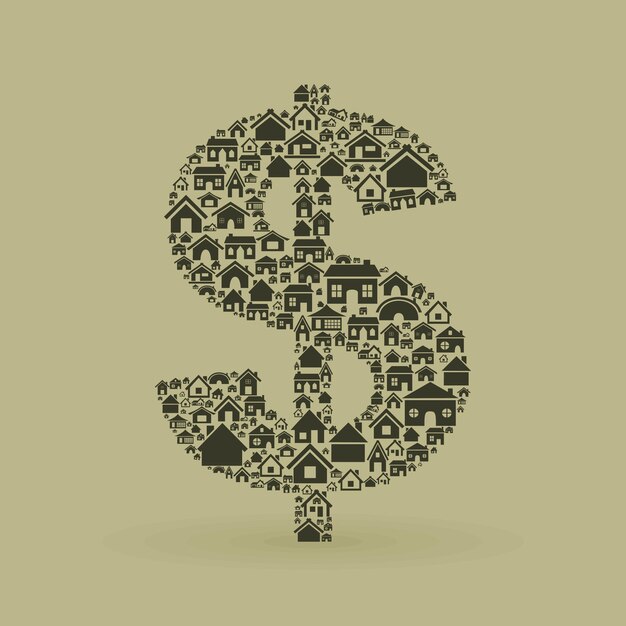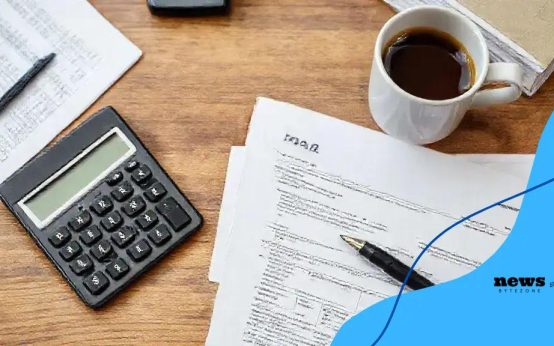Understanding the Federal Reserve’s Projected Interest Rate Hikes: A Guide for Homeowners in 2025 is crucial for anyone planning to buy or refinance a home, as these hikes can significantly impact mortgage rates and overall housing affordability.
Understanding the Federal Reserve’s Projected Interest Rate Hikes: A Guide for Homeowners in 2025 is essential homework for those considering a home purchase or refinance. By getting ahead of these projected shifts, potential homeowners can better prepare and make informed financial decisions impacting their long-term property investment.
Understanding the Federal Reserve’s Role
The Federal Reserve, often called the Fed, plays a pivotal role in the U.S. economy. Its decisions impact everything from inflation to employment rates but arguably none more so than mortgage rates and the housing market. Let’s dive into what exactly the Fed does and how its actions ripple through to your wallet.
The Fed’s primary tool is managing the federal funds rate, the interest rate at which commercial banks lend reserves to each other overnight. Changes to this rate influence other interest rates throughout the economy, including those for mortgages.
How the Fed Influences Interest Rates
When the Fed raises the federal funds rate, it becomes more expensive for banks to borrow money. This cost is then passed on to consumers and businesses in the form of higher interest rates for loans, including mortgages.
- Higher Mortgage Rates: Increased borrowing costs for banks lead to higher mortgage rates for homebuyers.
- Cooling Demand: Higher rates can cool down demand in the housing market as fewer people can afford to buy homes.
- Impact on Refinancing: Existing homeowners looking to refinance their mortgages may find it less attractive due to higher rates.
Conversely, when the Fed lowers the federal funds rate, borrowing becomes cheaper. This can stimulate economic activity, encouraging spending and investment. For homeowners, lower rates can make buying a home more affordable and refinancing more attractive.

Understanding the Fed’s role and how its decisions influence interest rates can help homeowners and potential buyers make informed decisions. By monitoring the Fed’s announcements and projections, you can anticipate changes in the housing market and adjust your financial strategies accordingly.
Projected Interest Rate Hikes for 2025
Looking ahead to 2025, various economic indicators and expert forecasts suggest potential interest rate hikes by the Federal Reserve. These projections are based on several factors, including inflation trends, employment data, and overall economic growth. Understanding these potential changes is crucial for homeowners and prospective buyers alike.
While predicting the future with certainty is impossible, analyzing current trends and expert opinions can provide valuable insights. Most economists agree that the Fed will likely continue to monitor inflation closely and adjust interest rates as needed to maintain price stability.
Factors Influencing Rate Hike Projections
Several factors influence the Fed’s decisions regarding interest rates. These include inflation rates, employment levels, GDP growth, and global economic conditions.
- Inflation: If inflation remains above the Fed’s target of 2%, it is likely to raise interest rates to cool down the economy.
- Employment: A strong labor market could lead the Fed to increase rates to prevent the economy from overheating.
- GDP Growth: Robust economic growth might prompt the Fed to raise rates to keep inflation in check.
Keep in mind that projections are not guarantees. Economic conditions can change rapidly, and the Fed may adjust its policies accordingly. It’s important to stay informed and consult with financial professionals to make the best decisions for your specific situation.
In conclusion, staying informed about the Fed’s projections and the factors influencing its decisions is crucial for homeowners and potential buyers. By understanding these dynamics, you can make more informed decisions about your housing and financial strategies.
Impact on Mortgage Rates
The projected interest rate hikes by the Federal Reserve will directly impact mortgage rates in 2025. As the Fed raises its benchmark rate, lenders typically increase mortgage rates to maintain their profit margins. This means that it will likely become more expensive to borrow money for a home purchase or refinance.
Understanding how these rate hikes affect mortgage rates can help you plan your home buying or refinancing strategy more effectively. Consider the following points to prepare for potential changes in mortgage rates.
Understanding the Correlation
The correlation between the Fed’s rate hikes and mortgage rates is not always one-to-one. Other factors, such as the demand for mortgage-backed securities and overall investor sentiment, can also influence mortgage rates.
Even with these additional factors, an increase in the federal funds rate typically leads to higher mortgage rates. Homebuyers and homeowners looking to refinance need to be aware of this relationship.
As mortgage rates rise, it’s important to shop around for the best deals. Different lenders may offer different rates and terms, so comparing quotes from multiple sources can help you save money over the long term.

Finally, being aware of how the Fed’s rate hikes affect mortgage rates can help you make informed decisions about your housing and financial future. Keep an eye on economic news and consult with financial advisors to stay ahead of the curve.
Strategies for Homebuyers
With projected interest rate hikes on the horizon, homebuyers in 2025 need to adopt smart strategies to navigate the changing landscape. Planning ahead and making informed decisions can help you secure a home without overstretching your budget.
There are several strategies you can employ to mitigate the impact of rising interest rates. Consider these proactive steps to make your home buying experience more manageable.
Lock in Rates Early
If you’re planning to buy a home in 2025, consider locking in a mortgage rate as early as possible. Many lenders offer rate lock options that allow you to secure a specific interest rate for a certain period.
- Protect Against Increases: Locking in a rate protects you from potential increases before you finalize your purchase.
- Shop Around: Compare rate lock options from different lenders to find the best terms.
- Understand the Terms: Be aware of the lock-in period and any associated fees.
By locking in a rate early, you can gain peace of mind and protect yourself from unexpected increases. However, be sure to carefully evaluate the terms and conditions to ensure it’s the right choice for your situation.
Consider expanding your search to different areas or types of properties. You might find more affordable options in up-and-coming neighborhoods or by considering condos or townhouses instead of single-family homes.
Finally, remember that buying a home is a long-term investment. By being prepared and proactive, you can navigate the challenges of rising interest rates and achieve your homeownership goals.
Options for Current Homeowners
If you already own a home, projected interest rate hikes can still impact your financial situation. While you might not be directly affected by higher mortgage rates, there are several strategies you can use to mitigate any potential negative effects.
Consider these options to manage your mortgage and financial health in light of rising interest rates. Each option has its own pros and cons, so evaluate your personal situation carefully before making any decisions.
Assess Refinancing Opportunities
Even with projected rate hikes, it’s worth assessing whether refinancing your mortgage could still be beneficial. While rates may be higher than in the past, you might still be able to secure a lower rate than what you’re currently paying.
A cash-out refinance involves borrowing more than your current mortgage balance and using the excess funds for other purposes, such as home improvements or debt consolidation.
- Pay Down Debt: Use the funds to pay off high-interest debt, such as credit cards or personal loans.
- Improve Your Home: Invest in home improvements that could increase your property’s value.
- Avoid Overextending: Be cautious not to overextend yourself and ensure you can comfortably afford the new mortgage payments.
Another strategy is to simply stay put and ride out the rate hikes. If your current mortgage rate is already relatively low, it might not be worth the cost and effort to refinance.
Long-Term Financial Planning
Understanding the Federal Reserve’s Projected Interest Rate Hikes: A Guide for Homeowners in 2025 is a crucial aspect of long-term financial planning. It’s important to consider how these changes will impact your overall financial health and make adjustments as needed.
Incorporating interest rate projections into your broader financial plan can help you make more informed decisions about your savings, investments, and debt management strategies. It’s all about being prepared and proactive.
Diversify Investments
Consider diversifying your investment portfolio to reduce risk. Spreading your investments across different asset classes, such as stocks, bonds, and real estate, can help cushion the impact of interest rate hikes.
- Consult a Financial Advisor: Get personalized advice from a professional to tailor your investment strategy to your specific goals and risk tolerance.
- Rebalance Regularly: Periodically rebalance your portfolio to maintain your desired asset allocation.
- Reduce Debt: Paying down high-interest debt can free up cash flow and reduce your overall financial risk.
Building an emergency fund is another crucial step in long-term financial planning. Having a cash cushion can help you weather unexpected expenses or financial setbacks, such as job loss or medical bills.
By incorporating interest rate projections into your long-term financial planning, you can make more informed decisions and achieve your financial goals, even in a changing economic environment.
| Key Point | Brief Description |
|---|---|
| 📈 Rate Hikes | The Fed may increase rates in 2025. |
| 🏡 Homebuyers | Lock rates early and shop smart. |
| 💰 Homeowners | Assess refinancing and manage debt. |
| 📊 Long-Term | Diversify investments and plan ahead. |
FAQ
▼
The Federal Reserve (the Fed) is the central bank of the United States. It controls monetary policy to stabilize the economy and manage inflation.
▼
Typically, when the Fed raises its benchmark interest rate, mortgage rates tend to increase as well, making borrowing more expensive for homebuyers.
▼
Homebuyers should consider locking in mortgage rates early and shop around for the best deals to mitigate the impact of rising rates.
▼
Homeowners should assess their refinancing options, considering their current mortgage rate and financial goals, to determine if it’s beneficial.
▼
Long-term financial planning, including diversifying investments, can help homeowners manage financial risks from interest rate fluctuations.
Conclusion
In conclusion, staying informed about the Federal Reserve’s projected interest rate hikes is critical for homeowners and potential buyers in 2025. Being proactive, exploring different strategies, and seeking professional advice can help you navigate the changing financial landscape and achieve your housing goals.


 Tax savings tips: how to maximize your benefits
Tax savings tips: how to maximize your benefits  HomeBudgeting: Master Your Finances Easily
HomeBudgeting: Master Your Finances Easily  Understanding Fed Rate Hikes: A Homeowner’s Guide for 2025
Understanding Fed Rate Hikes: A Homeowner’s Guide for 2025